Potřebujeme váš souhlas k využití jednotlivých dat, aby se vám mimo jiné mohly ukazovat informace týkající se vašich zájmů. Souhlas udělíte kliknutím na tlačítko „OK“.
ASTM E2008-08(2014)e1
Standard Test Methods for Volatility Rate by Thermogravimetry (Includes all amendments And changes 4/20/2017).
Automaticky přeložený název:
Standardní Zkušební metody pro výpočet volatility sazbu o termogravimetrii
NORMA vydána dne 15.3.2014
Informace o normě:
Označení normy: ASTM E2008-08(2014)e1
Poznámka: NEPLATNÁ
Datum vydání normy: 15.3.2014
Kód zboží: NS-43935
Počet stran: 6
Přibližná hmotnost: 18 g (0.04 liber)
Země: Americká technická norma
Kategorie: Technické normy ASTM
Kategorie - podobné normy:
Fyzikálně chemické analytické metody
Zkušební podmínky a postupy všeobecně
Anotace textu normy ASTM E2008-08(2014)e1 :
Keywords:
mass loss, thermogravimetric analysis (TGA), thermogravimetry (TG), volatility, volatility rate, ICS Number Code 19.020 (Test conditions and procedures in general), 71.040.50 (Physicochemical methods of analysis)
Doplňující informace
| Significance and Use | ||||||||||||||
|
5.1 Volatility of a material is not an equilibrium thermodynamic property but is a characteristic of a material related to a thermodynamic property that is vapor pressure. It is influenced by such factors as surface area, temperature, particle size, and purge gas flow rate; that is, it is diffusion controlled. 5.2 The extent of containment achieved for specimens in these test methods by means of a pinhole opening between 0.33 to 0.38 mm allows for measurement circumstances that are relatively insensitive to experimental variables other than temperature. Decreasing the extent of containment by use of pinholes larger than 0.38 mm will increase the magnitude of the observed rate of mass loss but will also reduce the measurement precision by increasing the sensitivity to variations in other experimental variables. 5.3 Results obtained by these test methods are not strictly equivalent to those experienced in processing or handling conditions but may be used to rank materials for their volatility in such circumstances. Therefore, the volatility rates determined by these test methods should be considered as index values only. 5.4 The volatility rate may be used to estimate such quantifiable values as drying interval or the extent of volatile release from a process. |
||||||||||||||
| 1. Scope | ||||||||||||||
|
1.1 These test methods cover procedures for assessing the volatility of solids and liquids at given temperatures using thermogravimetry under prescribed experimental conditions. Results of these test methods are obtained as volatility rates expressed as mass per unit time. Rates ≥ 5 μg/min are achievable with these test methods. 1.2 Temperatures typical for these test methods are within the range from 25°C to 500°C. This temperature range may differ depending upon the instrumentation used. 1.3 These test methods are intended to provide a value for the volatility rate of a sample using a thermogravimetric analysis measurement on a single representative specimen. It is the responsibility of the user of these test methods to determine the need for and the number of repetitive measurements on fresh specimens necessary to satisfy end use requirements. 1.4 The values stated in SI units are to be regarded as standard. No other units of measurement are included in this standard. 1.5 There is no ISO method equivalent to this standard. 1.6 This standard does not purport to address all of the safety concerns, if any, associated with its use. It is the responsibility of the user of these test methods to establish appropriate safety and health practices and determine the applicability of regulatory limitations prior to use. |
||||||||||||||
| 2. Referenced Documents | ||||||||||||||
|
Podobné normy:
Historická
1.6.2006
Historická
1.2.2007
Historická
1.8.2007
Historická
1.4.2008
Historická
1.4.2008
Historická
15.12.2008


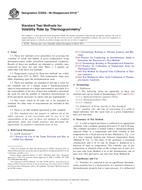
 ASTM E1770-95(2006)..
ASTM E1770-95(2006)..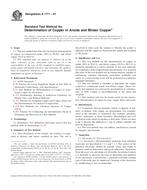 ASTM E1771-07
ASTM E1771-07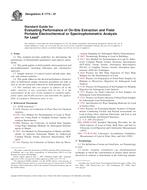 ASTM E1775-07
ASTM E1775-07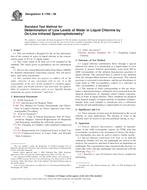 ASTM E1786-08
ASTM E1786-08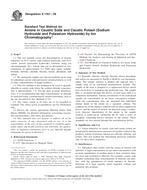 ASTM E1787-08
ASTM E1787-08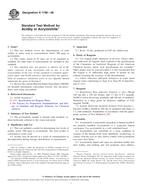 ASTM E1788-08
ASTM E1788-08
 Cookies
Cookies
